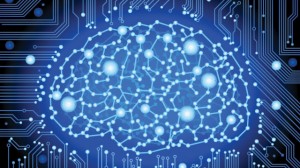Posted by Jack
How Much Memory Can Your Brain Store? Answer: More than you’ll ever need says science. Everything we learn and experience is stored somewhere in our brain, the sights, sounds, smells, everything is in there somewhere. Imagine our potention if we could access this informationat at will. The possibilities are almost limitless.
The human brain contains roughly 100 billion neurons [Ed. note: closer to 86-billion, actually, but now we’re just being nitpicky]. Each of these neurons seems capable of making around 1,000 connections, representing about 1,000 potential synapses, which largely do the work of data storage. Multiply each of these 100 billion neurons by the approximately 1,000 connections it can make, and you get 100 trillion data points, or about 100 terabytes of information.
 There are trillions of these connections throughout your brain helping orchestrate everything from movement, to learning, to establishing and recalling memories.
There are trillions of these connections throughout your brain helping orchestrate everything from movement, to learning, to establishing and recalling memories.
But we still don’t understand how all the connections between those neurons work. Now researchers at MIT and Harvard have created a new computer chip model that could change that in a big way.
Your basic synapse is a connection between two neurons: a presynaptic neuron, and a postsynaptic neuron. Presynaptic neurons release neurotransmitters, which dock with receptors on the postsynaptic neuron and activate what are known as ion channels in the postsynaptic cell membrane.
Ion channels are like a neuron’s gatekeepers; they allow charged atoms such as sodium, potassium and calcium into and out of the cell, and are thought to play an important role in the regulation of synaptic plasticity, i.e. the strengthening or weakening of neuronal connections over time.
All this is to say that when neurons talk to one another, there’s more regulating their communication than a simple on/off switch; and yet, most of the computer chips that we use to model brain activity operate in this binary fashion.
But researcher Chi-Sang Poon and his colleagues in the Harvard-MIT Division of Health Sciences and Technology have created a model of synaptic plasticity that can actually mimic the intricate intracellular ongoings of a single neuron in a single synapse.
“If you really want to mimic brain function realistically, you have to do more than just spiking [turning neuron-connections on and off],” explains Poon. “You have to capture the intracellular processes that are ion channel-based.”
To accomplish this, Poon and his colleagues designed a silicon chip with a total of 400 transistors, which allow current to flow through not in a digital, on/off fashion, but an finely tuned analog one. (The chip is pictured at left.)
“We can tweak the parameters of the circuit to match specific ion channels,” Poon says. “We now have a way to capture each and every ionic process that’s going on in a neuron.”
BRAIN TRANSPLANTS? Scientists thing it may be possible in the not too distant future.
The researchers describe the implications of their findings in the latest issue of Proceedings of the National Academy of Sciences:
The versatile [synapse device] is applicable to a variety of neuroprosthesis, brain-machine interface, neurorobotics, neuromimetic computation, machine learning, and neural-inspired adaptive control problems. Translation? The team believes their work will have applications down the road ranging from disease research and treatment, to integration into brain-machine interfaces. (Ed note we already have brain interface applications that can help hear, see and even improve motor coordination for people with Parkinson’s)
According to Poon, the chip is a huge step towards achieving an unprecedented level of understanding of the human mind, one that could soon allow us to build systems that could actually replace portions of a damaged brain (think novel treatments for stroke victims), or even “enhance part of the brain systems beyond the normal human capacity.”

A Brain Transplant I Would Like To See.
Water boy, blame-the-victim, epic fail boy, and an about to be reanimated Colgan in a daisy chain swap complete with Jacob’s ladders, spark spewing control panels, giant variable transformers, huge knife-edge throw switches, and an elevation platform raising them shackled to a powerful lightning storm above the laboratory castle keep.
Funny…I had that same vision! lol Thanks Pie.